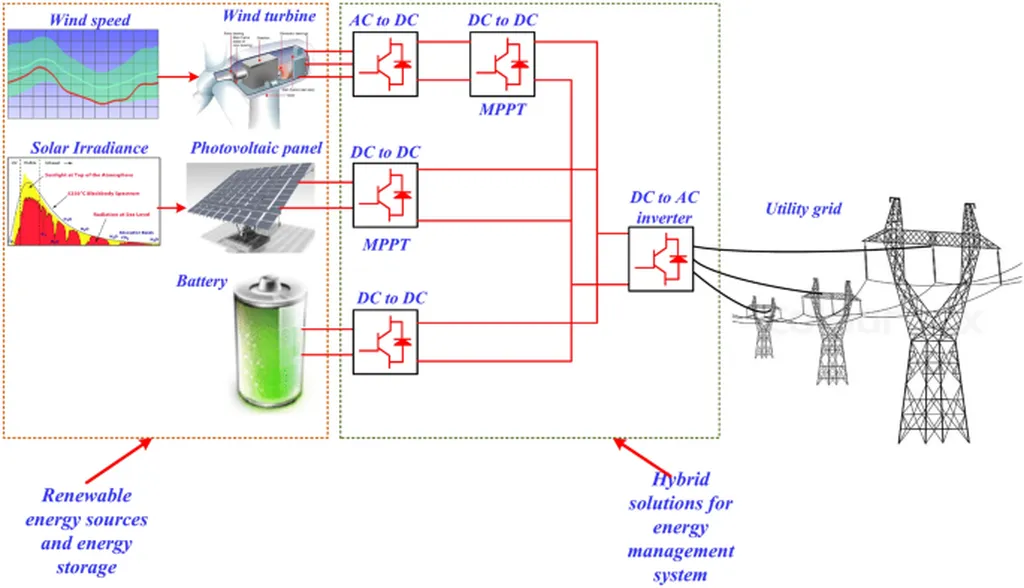In the quest to integrate more renewable energy into our power grids, researchers have long grappled with the challenges of voltage fluctuations, safety risks, and the limitations of traditional control systems. A recent study published in the journal *Energies*, titled “Optimal Configuration for Photovoltaic and Energy Storage in Distribution Network Using Comprehensive Evaluation Model,” offers a promising solution to these pressing issues. Led by Rui Gao from the State Key Laboratory of Advanced Electromagnetic Technology at Huazhong University of Science and Technology in Wuhan, China, the research presents a novel approach to optimizing the configuration of photovoltaic (PV) and energy storage systems in distribution networks.
The study addresses the critical need to enhance the efficiency of renewable energy consumption while reducing reliance on fossil fuels. Traditional methods often fall short due to insufficient consideration of converter interactions with the distribution network and the limitations of single-control frameworks. Gao and his team have developed a four-dimensional comprehensive evaluation system that includes grid-strength quantification indicators, such as the generalized short-circuit ratio. This system forms the backbone of a multi-objective mathematical model, which evaluates performance using the analytic hierarchy process and criteria importance through the intercriteria correlation method.
One of the most innovative aspects of this research is the proposal of a multi-type synchronous control framework. This framework enables dynamic selection of grid-following (GFL) and grid-forming (GFM) converters at different nodes, overcoming the constraints of traditional single-control systems. “Our approach allows for a more flexible and adaptive control strategy, which can significantly improve the operating states and reduce energy consumption in distribution networks,” explains Gao.
The simulation results of the study are particularly encouraging. The proposed optimal configuration scheme demonstrates a marked improvement in the operating states of distribution networks, along with a reduction in energy consumption. This has profound implications for the energy sector, as it paves the way for more efficient and reliable integration of renewable energy sources.
The commercial impacts of this research are substantial. As the world continues to shift towards renewable energy, the need for advanced control systems that can handle the variability and intermittency of solar power becomes increasingly critical. The multi-type synchronous control framework proposed by Gao and his team offers a scalable and adaptable solution that can be implemented in various distribution networks. This could lead to more stable and efficient power grids, ultimately benefiting both energy providers and consumers.
The study’s findings were published in the journal *Energies*, which focuses on research related to energy production, conversion, and management. The research not only advances the scientific understanding of distribution network optimization but also provides practical tools for engineers and policymakers working to transition to a more sustainable energy future.
As the energy sector continues to evolve, the insights gained from this research could shape future developments in grid management and renewable energy integration. By addressing the challenges of voltage fluctuations and safety risks, Gao’s work contributes to the broader goal of creating a more resilient and sustainable energy infrastructure. The multi-type synchronous control framework represents a significant step forward in this endeavor, offering a versatile and effective solution for the energy challenges of tomorrow.

